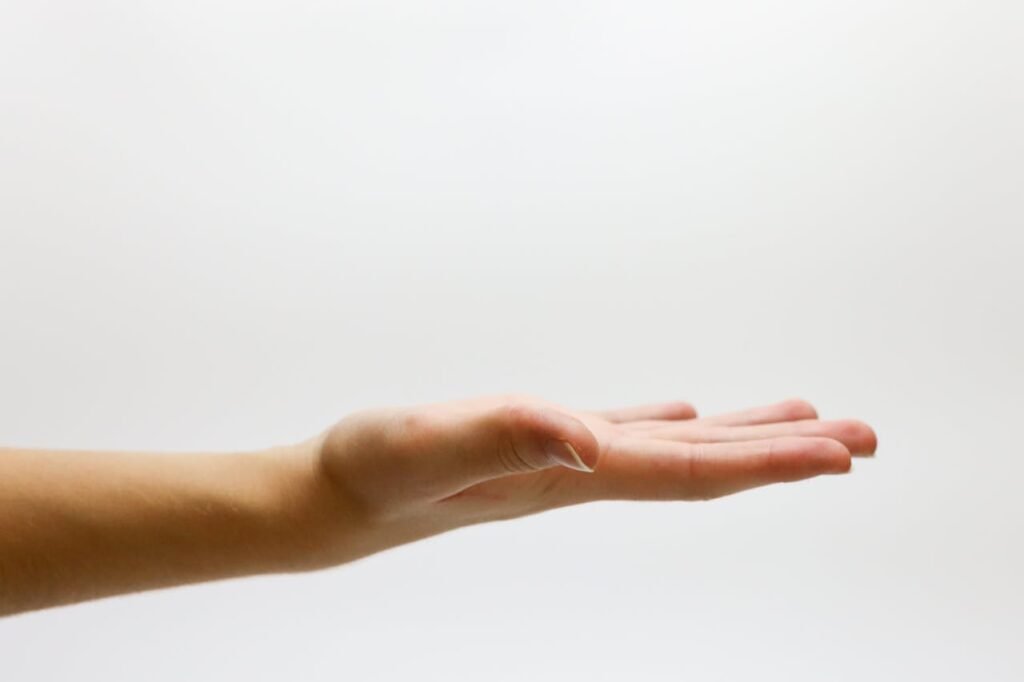Losing a finger can change everything. Simple actions like buttoning a shirt, holding a pen, or picking up your phone become harder. It’s not just about the hand—it’s about freedom, confidence, and being able to live without limits.
At Robobionics, we know this. Every day, we talk to people who want to feel whole again. Who want their hands to work with them, not against them. That’s why we’re always pushing forward—asking what’s next in prosthetic fingers, and how we can make life better, one hand at a time.
In this article, we’ll explore the future of finger prosthetic technology—where it’s headed, what breakthroughs are around the corner, and how innovation is putting power back into the hands of those who need it most.
The Evolution of Finger Prosthetics
From Wooden Fingers to Today’s Tech
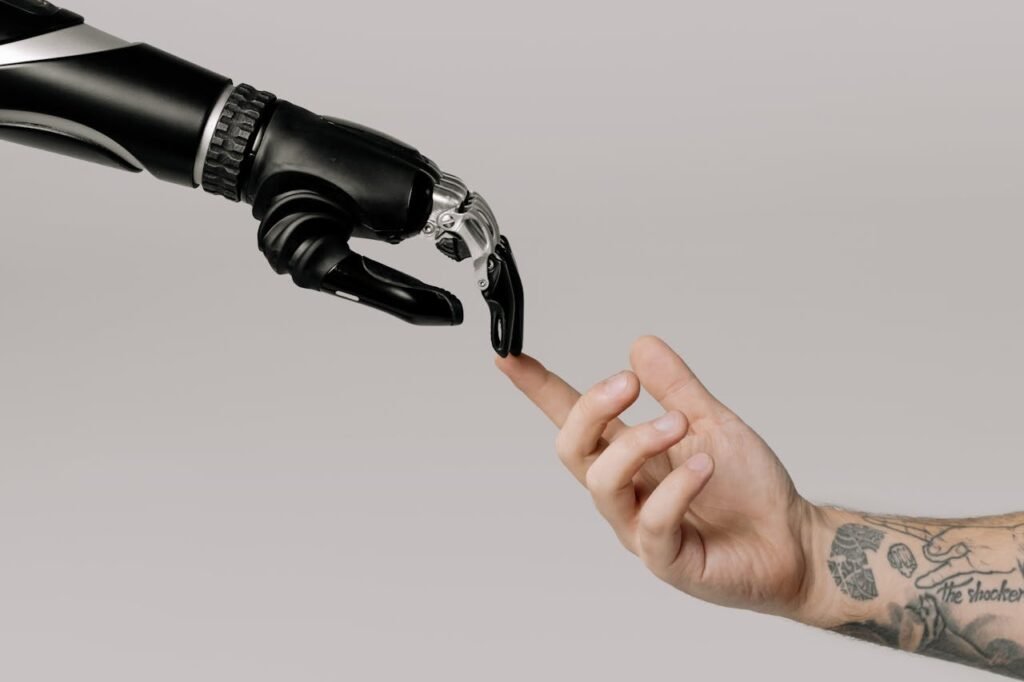
The journey of finger prosthetics started long ago. In the early days, people used wood, metal, or leather to replace missing fingers. These were heavy, stiff, and purely cosmetic.
They didn’t move. They couldn’t help hold anything. They were just there to fill the gap.
Over time, we saw changes. Plastic replaced metal. Rubber gave a better fit. Silicone made them look more real. But still, they weren’t truly functional.
That’s where the big shift happened.
Enter the Mechanical Finger
The first real change came with mechanical fingers. These are devices that move using hinges, springs, or cables. When the user bends their wrist or moves their arm, the finger reacts.
It’s simple but powerful.
These fingers gave people back some grip. They could hold light objects or support the other hand. Tasks like typing, holding a spoon, or turning a doorknob got easier.
But there was still one big problem—control.
Myoelectric Signals Changed the Game
The next leap came with something truly exciting: myoelectric control. This is a smart system where the prosthetic reads the tiny signals from your muscles.
Imagine tensing your arm, and your finger moves. That’s what this tech does.
Now, people didn’t need to move their wrist to control the finger. They could just think about moving it, and it worked. This made everything smoother and more natural.
It also opened the door to more precise, more personal use of the prosthetic finger.
Function Wasn’t Enough—Looks Matter Too
Another key part of this evolution has been cosmetic. Today’s prosthetic fingers look incredibly real. Skin tones, veins, even tiny wrinkles can be matched.
Why is this important? Because people want to feel like themselves again. A prosthetic shouldn’t just work well—it should feel like a part of you. And how it looks plays a huge role in that.
As the tech improved, so did the look and feel. And that helped people regain not just function—but confidence.
What’s Next — The Future of Finger Prosthetic Technology
Smarter Sensors: More Than Just “Grip”
One big shift we’re seeing is smarter sensors. Today’s prosthetic fingers mostly sense when you grip or release. But the future is much more nuanced.
Imagine a finger that can tell whether you’re holding a grape or a mug of coffee. It knows without crushing the grape or spilling your drink.
These advanced sensors read pressure, temperature, and texture. They give real feedback—not guesswork. That means people can adjust their grip instantly, without thinking too hard.
These sensors can also detect motion. This helps the finger know when it’s on the move and adjust grip strength accordingly. It reduces mishaps like dropping a phone or gripping too slowly.
The key thing is that these sensors don’t get in the way. They’re tiny, light, and smart. They work in the background so users feel in control, not fighting the device.
Artificial Intelligence That Learns from You
Sensors are just half the story. What if the prosthetic “learns” how you like to hold things? That’s where artificial intelligence—AI—comes into play.
The future of finger prosthetics will use AI to customize itself. It starts by learning your motions, your grip patterns, and your preferences.
Say you always hold a pen with a certain angle or a cup in a unique way. Over time, AI picks up on that and fine-tunes the control.
This makes control smoother, more intuitive. You don’t have to think about basic moves. You just do them, and the finger’s already one step ahead.
AI also adapts over time. If your grip strength changes, or your favorite way to hold something shifts, the AI adjusts. That keeps the device feeling fresh and responsive, even as you change.
Sense of Touch — Feeling Again
One of the most exciting futures for finger prosthetics is bringing back touch.
Robobionics and others are working on technology that lets users feel pressure, texture, and temperature—what we call haptic feedback.
Tiny motors or vibration units in the fingertip mimic the sensation of touch. When you pick up something rough, warm, or pressing gently, your brain senses it.
This kind of feedback helps people use their prosthetic fingers without watching them. It’s a huge leap toward feeling natural again.
The technology is already promising. Simple haptic feedback paired with AI and sensors is opening the door to truly lifelike touch in the near future.
Modular Designs: Personalized and Adaptable
Imagine your finger prosthetic could grow and change just like a phone case.
Modular designs mean you can swap out parts—grip tips, sensors, or covers—based on what you need. Want a softer tip for art? Swap it in. Need a tougher tip for work? Just switch.
This goes beyond simple change. It’s about personalization.
Different users have different needs. Artists need fine control. Workers might need strength. Kids want fun colors or playful designs. Modular systems make that possible.
Over time, users could upgrade their prosthetic as needs evolve—without buying a whole new device. That’s smart, sustainable, and keeps people feeling excited about using their fingers.
Batteries That Last Longer, Charge Faster
Small devices like finger prosthetics rely on batteries. And batteries need to get better.
The future holds longer-lasting batteries that weigh less and recharge fast. Some are even exploring solar or kinetic power—energy from movement.
Imagine a battery that lasts a full week on one charge, or a charging pad that gives you hours of use in minutes. That’s a game-changer.
Efficient batteries reduce charging anxiety. Users aren’t scared about running out of power in public or mid-task. It gives peace of mind and full-day reliability.
Skin That Breathes and Blends In
Looks matter. But so does comfort.
The next generation of fingertips will use skin that breathes—letting air and moisture pass through, keeping the skin underneath healthy.
Imagine a cover that looks real but doesn’t feel fake. It blends in under bright light or close up. And it stays dry and fresh even in hot weather.
Personalized skin tones and textures will keep getting better. Scars, freckles, and bends in the knuckles—these touches help prosthetics become a second skin, not just a tool.
Wireless Updates and Remote Tuning
No more visiting a clinic to tweak your finger.
Wireless connections let prosthetic devices update software or calibration over Wi‑Fi or Bluetooth.
If your grip needs adjusting, your clinic can send a software patch remotely. AI improvements or bug fixes can happen from far away.
Remote tuning means better service and fewer visits. It empowers users to stay comfortable and confident without searching for help.
Integration With Smart Devices
Our world is smart. Our phones, watches, home gear—all connected.
Finger prosthetics will join that ecosystem. They could pair with phones to track usage, monitor battery life, or customize grip modes with a tap.
One day, your finger might log your daily grip count, warn you of wear or battery drain, or switch modes when you move from typing to cooking.
Everything works together in a smart, easy way.
Affordability That Opens Doors
None of this matters if it’s out of reach.
Robobionics is leading the way by offering advanced tech at prices thousands lower than imports. And the future holds even more cost-effective manufacturing.
Local production, 3D printing, and shared components help drive costs down. That means the smartest prosthetic fingers aren’t only for a few.
It’s for students, workers, and families everywhere. Technology that’s powerful, yet priced for the people who need it most.
Collaboration Across Fields
The future won’t come from just one lab or one engineer.
Innovations are happening where clinicians, engineers, patients, and artists meet.
Doctors help define what motions matter. Engineers build the tech. Users shape the feel and look. Designers bring artistry.
That kind of teamwork creates breakthroughs that are powerful, useful, and human.
Real Stories Fuel Real Progress
What will keep driving change is you.
People who use prosthetic fingers share their ideas, frustrations, and hopes.
One user might say, “I wish I could feel the temperature of my baby’s hand.” Another says, “I want to open a heavy door without strain.”
Each insight pushes the tech further. The future of finger prosthetics will be built by people with hands that want to live fully again.
Looking Ahead — A Day in the Life, Future-Style
Picture this:
You wake up, put your hand under the running tap, and your finger feels just-right warmth.
You pick up your coffee mug without looking. Your finger senses the smooth edge, warms slightly, and your brain recognizes every nuance.
At work, you slide your finger into a thin pen tip designed for writing. It’s soft and grips just how you like.
Lunch time, you switch to a tougher grip assistant, perfect for gripping a knife or fork.
At home, your finger syncs with your phone. It charges wirelessly, updates its software, and learns from how you use it every day.
As bedtime nears, your finger goes into low-power mode and rests, ready to do it all again tomorrow.
Challenges That Still Need Solving
Making Movement More Natural
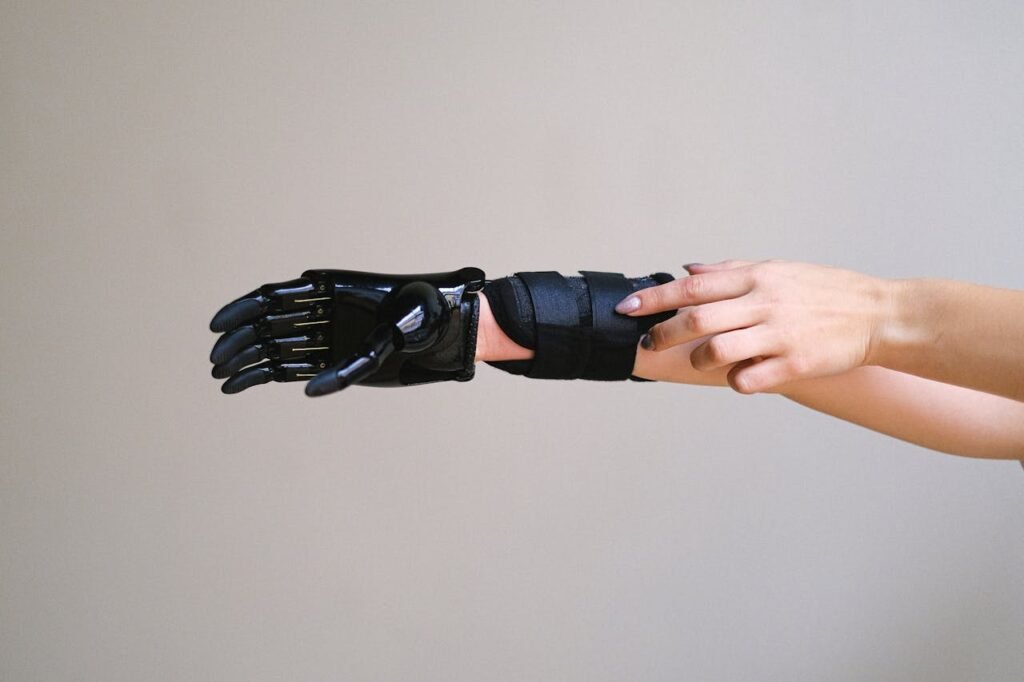
Even with all the tech advances, natural movement is still hard to get right.
Most prosthetic fingers work well for basic tasks like gripping or tapping. But they struggle with smooth, flowing motions—like playing a musical instrument or tying shoelaces.
The reason? Real fingers bend and twist in very complex ways. Each joint moves in sync with the others. Getting a device to do that is hard. It takes precise control, fast response, and a soft, flexible structure.
Researchers are working on soft robotics—devices made of bendable materials that move like skin and muscle. These systems promise more lifelike motion, without the clunky feeling of older models.
But we’re not there yet. Making them small, strong, and affordable is still a challenge. Still, the work is happening, and progress is steady.
Delays in Signal Processing
Another hurdle is signal delay.
When you send a signal from your muscles, the prosthetic needs to catch it, understand it, and act—all in milliseconds. But sometimes, there’s a slight lag.
That lag can make movements feel unnatural. It’s like your hand isn’t keeping up with your brain.
Engineers are working to shrink these delays by improving software speed, processor efficiency, and sensor design.
Future models may use edge computing—where decisions happen right inside the prosthetic rather than needing to talk to another device. This should help everything feel instant, just like your real fingers.
Getting Used to the Tech
Even with the best prosthetic finger, there’s a learning curve.
People don’t always know how to use their new hand. It takes practice, patience, and training. Your brain and body need time to work with this new tool.
This is where rehab and support become critical. At Robobionics, we offer gamified rehab apps that make learning fun. But across the world, not every clinic has this support.
We need more awareness, more tools, and more people who can guide users with care. Because the technology is only as good as the experience behind it.
Durability vs. Comfort
Lightweight fingers are easier to wear. But tough, durable fingers need strong parts—often heavier.
Finding that perfect balance is tough. Users want something that can last for years but also feels light and doesn’t cause pain or skin issues.
Designers are exploring advanced materials like carbon fiber, silicone composites, and soft plastics. These offer strength without weight, but they cost more and take time to test.
Future prosthetics will likely use a mix of materials tailored to each user’s needs—tough for some parts, soft for others.
It’s not one-size-fits-all anymore.
Access in Rural and Remote Areas
In many parts of India and across the world, access is still the biggest problem.
People who need finger prosthetics often live far from cities. Clinics may be hours away. Getting a fitting, repairs, or even basic training can be hard.
Robobionics is working to change that. We partner with local prosthetic centers and rehab teams. But more needs to be done.
We dream of mobile fitting units, 3D scanning by smartphone, and delivery systems that bring hope straight to the doorstep.
Because everyone deserves a second chance—no matter where they live.
Insurance and Funding Gaps
Cost remains a major challenge.
While Grippy Mech Finger and our other models are priced far below international brands, they still need support from insurance, government programs, or NGOs.
Right now, finger prosthetics are not always covered by standard health insurance. That leaves many people stuck, waiting, or giving up.
We are actively speaking with policy leaders, insurance firms, and donor groups. The future needs to include fair funding—so people can focus on healing, not costs.
The Role of 3D Printing in the Future of Prosthetics
Custom Fit, Every Time
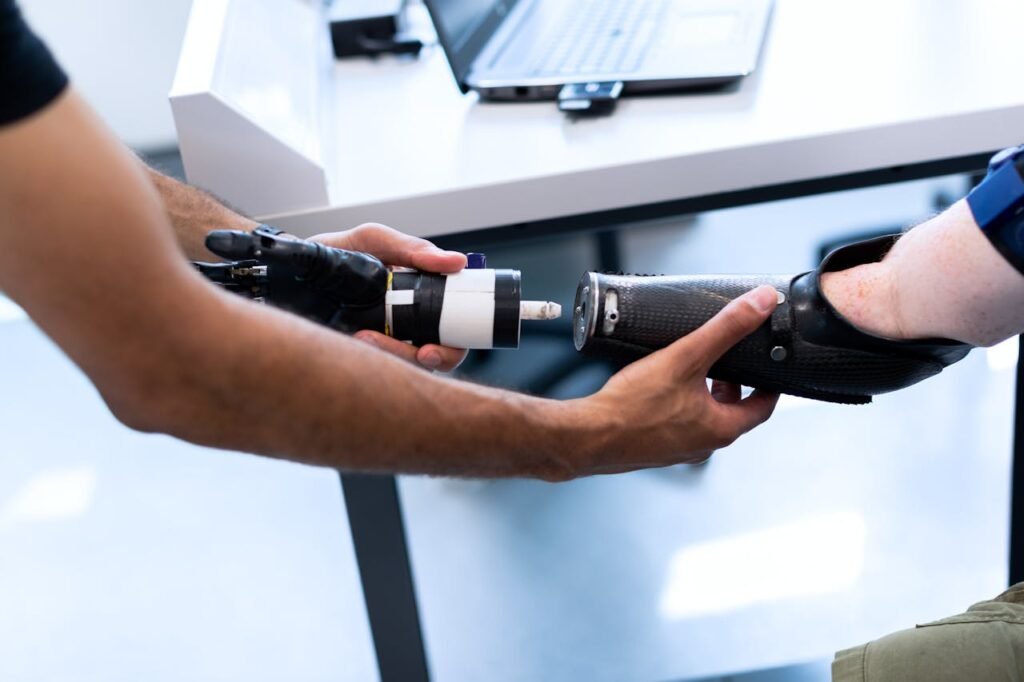
One of the most exciting changes in prosthetic finger design is how 3D printing makes custom fits easy.
Every person’s hand is different. Traditional prosthetics often need adjustments and fittings that can take weeks. But with 3D printing, we can scan a person’s hand, model it on a computer, and print a device made just for them.
It’s faster, more accurate, and more comfortable.
This also means that even in remote areas, someone can scan a user’s hand and send the file to a central location to print. That cuts down travel, wait time, and stress.
Faster Prototyping, Faster Progress
New ideas used to take months to test. Engineers would design a part, manufacture it, test it, then repeat the whole process.
3D printing changed that.
Now, designers can test a new joint or grip tip in hours, not months. This rapid prototyping means better tech reaches users faster. Problems get fixed sooner. Features improve quickly.
At Robobionics, we use 3D printing to iterate faster. This helps us bring new models to life with fewer delays—and tailor designs to specific user needs.
Lowering Costs Without Cutting Quality
Traditional manufacturing needs molds, machinery, and large production runs. That costs money.
3D printing cuts those costs dramatically. It doesn’t need molds. It doesn’t need big batches. Each part is printed on demand, with little waste.
This helps us offer world-class technology at far more affordable prices—without compromising on quality.
More affordable parts also mean more users can try new features without big investments. That’s real accessibility.
Materials That Keep Evolving
When 3D printing started, it was mostly for plastics. Today, the material options are growing fast.
We now have flexible filaments that mimic skin, strong resins that act like bone, and even composite materials that offer the strength of metal but weigh less.
The future will bring even better materials—more breathable, more durable, and more skin-friendly. That means prosthetic fingers that last longer, feel better, and look more real.
Local Production for Global Impact
Another huge benefit? 3D printing makes local production possible.
Instead of importing parts or waiting for international shipments, clinics and centers in India can print parts locally. This speeds up service and supports local economies.
Robobionics believes in “Make in India.” We already manufacture 60 of 64 components for our Grippy systems in India. With 3D printing, we can bring that number even higher.
It’s a future that’s local, fast, and built for real people’s lives.
How Robobionics Is Shaping the Future of Finger Prosthetics
Made in India, Made for Everyone

At Robobionics, we believe innovation should include everyone—not just the few who can afford high-end imports.
That’s why we make our products in India, using local suppliers, local talent, and local care.
Most international bionic fingers cost more than ₹10 lakh. That’s out of reach for most families. So we designed the Grippy Mech Finger and Grippy Mech Hand to do more, cost less, and last longer.
They’re made by people who understand the daily challenges of Indian users—from heat and dust to long work hours and active lifestyles.
This is technology that’s grounded in reality.
Grippy Mech Finger — Power in One Finger
The Grippy Mech Finger is one of our most exciting products. It’s not just a finger—it’s a tool for freedom.
It’s perfect for users with partial hand loss who want to regain grip strength, control, and independence. It uses a mechanical system to mimic real finger movement. No batteries, no charging—just clean, efficient motion.
It can be worn comfortably all day, works in tough environments, and helps users get back to work, play, and everyday life.
It’s simple, smart, and built for the long haul.
Built With Users, Not Just for Them
We don’t just build tech in a lab. We sit with users, listen to their stories, and learn from their lives.
When someone says, “I wish my finger could help me ride a bike,” we design for that. When someone says, “I need something I can clean with soap and water,” we make it happen.
This user-first approach is what sets Robobionics apart. It’s not about fancy features—it’s about real lives and real needs.
Our designs are shaped by tailors, farmers, drivers, students, and teachers. People who just want their hands back.
Sense of Touch™ — A Big Step Toward Feeling Again
One of our proudest breakthroughs is our Sense of Touch™ technology. It gives users tactile feedback through gentle vibrations—so they can “feel” what they’re touching.
This doesn’t just help with control. It reconnects people with their world.
Imagine feeling the softness of a baby’s blanket or the pressure of holding a spoon. It brings awareness back to the hand, and helps users trust their touch again.
This kind of innovation used to be reserved for ultra-expensive prosthetics. Now, it’s available at a fraction of the price—without compromise.
Real Support, Not Just a Device
Buying a prosthetic finger isn’t like buying a gadget. It’s the start of a journey. And we’re there at every step.
We help users with training, rehab, fitting, and follow-ups. We’ve even created a Gamified Rehabilitation App that makes practice easy and fun.
We work with clinics, caregivers, and families to make sure every user feels seen, supported, and successful.
Because a prosthetic doesn’t change your life on its own. The right guidance does.
Our Vision: Dignity, Confidence, and Care
Our goal isn’t just to make devices. It’s to restore confidence. To help people feel proud of their hands again.
We want to erase the line between “disabled” and “able.” With the right tools, every person can live fully, independently, and with dignity.
That’s the future we’re building. One hand at a time.
A New Chapter for Prosthetic Fingers
Empowering the Next Generation
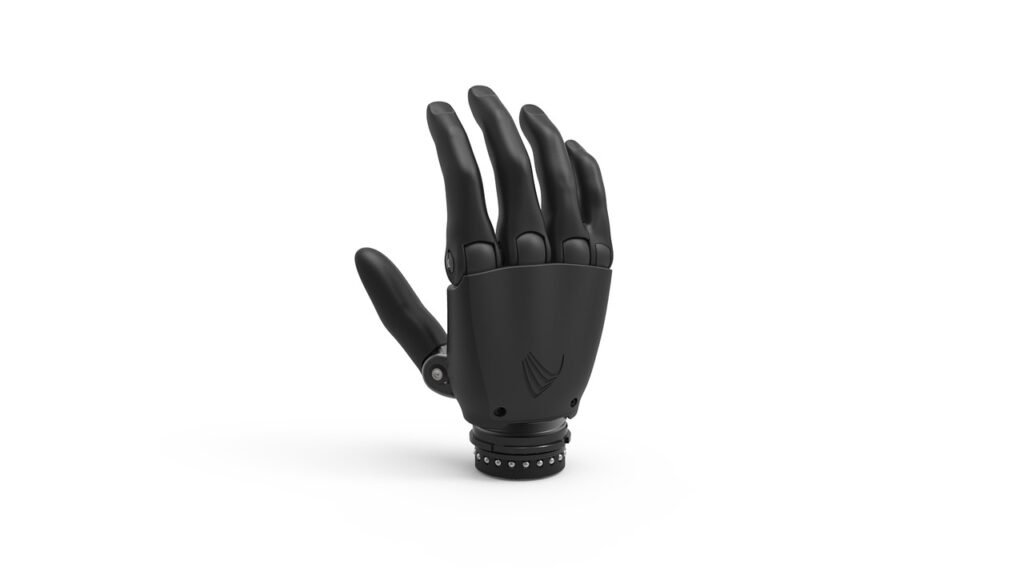
Children who grow up with limb differences often face challenges that go beyond physical ability. Confidence, curiosity, and the freedom to play or learn just like anyone else—those things matter just as much.
That’s why the future of prosthetic fingers isn’t only about adults. It’s about kids, too.
Lighter designs, fun customizations, and simple control systems are being developed just for younger users. With playful colors, soft materials, and easy training, prosthetics become part of a child’s life—not a burden.
These children won’t grow up feeling “less than.” They’ll grow up with tools that help them chase every dream.
From Disability to Possibility
Prosthetics used to be seen as medical devices. Now, they’re powerful enablers.
A prosthetic finger isn’t just a replacement. It’s a chance to drive again, to paint, to work, to hug your child with both hands. It opens the door to possibility.
That’s a mindset shift happening all over the world—and right here in India.
At Robobionics, we meet people every week who prove that “disability” is only a word. With the right support, they become writers, chefs, tech workers, artists, and athletes.
And we’re honored to play a small part in their journeys.
Tech That Keeps Getting Better—Together
The future isn’t just about what we build. It’s about who we build it with.
We work with universities, hospitals, rehabilitation experts, and users themselves to keep improving. Every comment, every suggestion, every challenge helps shape the next version.
Your voice matters. Your experience shapes the future.
We believe the best ideas don’t come from machines. They come from people. And that’s how we’ll keep moving forward—hand in hand, with our users as our guide.
Try It. Feel It. Live It.
If you or someone you know is living with finger loss, don’t wait for tomorrow.
Today’s technology is already powerful, affordable, and ready to help you reclaim your hand—and your life.
You can book a free demo with our team, ask questions, or even try on a device to see how it feels. We’ll walk with you from the first hello to your first hug with your new hand.
We’re not just here to sell. We’re here to support.
Visit robobionics.in/bookdemo to take your first step.
Because the future isn’t far away. It’s already in your reach.



